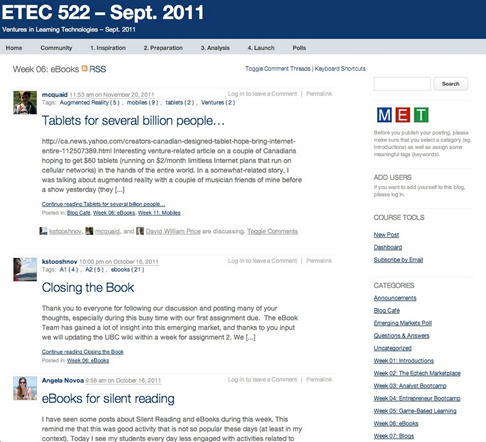10. Step Seven: Design Course Structure and Learning Activities
10.5. Strong or Loose Structure?
Another critical decision is just how much you should structure the course for the students. This will depend partly on your preferred teaching philosophy and partly on the needs of the students.
If you have a strong view of the content that must be covered in a particular course, and the sequence in which it must be presented (or if you are given a mandated curriculum by an accrediting body), then you are likely to want to provide a very strong structure, with specific topics assigned for study at particular points in the course, with student work or activities tightly linked.
If on the other hand you believe it is part of the student’s responsibility to manage and organize their study, or if you want to give students some choice about what they study and the order in which they do it, so long as they meet the learning goals for the course, then you are likely to opt for a loose structure.
This decision should also be influenced by the type of students you are teaching. If students come without independent learning skills, or know nothing about the subject area, they will need a strong structure to guide their studies, at least initially. If on the other hand they are fourth year undergraduates or graduate students with a high degree of self-management, then a looser structure may be more suitable to their needs. Another determining factor will be the number of students in your class. With large numbers of students, a strong, well defined structure will be necessary to control your workload, as loose structures require more negotiation and support for individual students.
My preference is for a strong structure for fully online teaching, so students are clear about what they are expected to do, and when it has to be done by, even at graduate level. The difference is that with post-graduates, I will give them more choices of what to study, and longer periods to complete more complex assignments, but I will still define clearly the desired learning outcomes in terms of skill development in particular, such as research skills or analytical thinking, and provide clear deadlines for student work, otherwise I find my workload increases dramatically.
ETEC 522 at the University of British Columbia is a loosely structured graduate course, in that students organize their own work around the course themes. The course design changes every year because the course deals with a fast-changing study domain (the potential of new technologies for education), an example of agile design.

The web page illustrated in Figure 7 though from the 2011 version of the course demonstrates clearly a relatively loose structure. The weekly topic structure is on the right, covering seven weeks of the course, the remaining six being time for students to work on their projects. The outcomes of student activities are in the main body, posted by students through their blogs. Note this is not using a learning management system, but WordPress, a content management system, which allows students more easily to post and organize their activities.
Blended learning provides an opportunity to enable students to gradually take more responsibility for their learning, but within a ‘safe’ structure of a regularly scheduled classroom event, where they have to report on any work they have been required to do on their own or in small groups. This means thinking not just at a course level but at a program level, especially for undergraduate programs. A good strategy would be to put a heavy emphasis on face-to-face teaching in the first year, and gradually introduce online learning through blended or hybrid classes in second and third year, with some fully online courses in the fourth year, thus preparing students better for lifelong learning.
